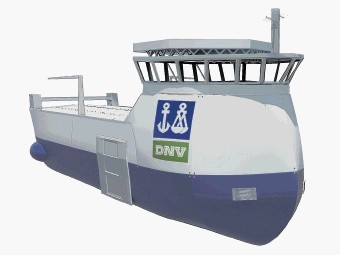
Summer school students at risk management and certification firm DNV have created a new concept for a year-round Arctic response oil spill system.
Aurora – standing for Arctic United Response Operation and Recovery Agreement – was created over a seven-week project by 10 students.
Its cornerstone is a multifunctional concept vessel, the Boreast, capable of performing oil spill response tasks in the Arctic.
Its design includes an unmanned aerial vehicle, remote in-situ burning, an autonomous underwater vehicle, towable storage bladders and an ice cleaning conveyor belt, to name a few.
The system itself includes requirements for people, vessels and equipment, including efficient logistics, appropriate vessels, a wide range of equipment and human expertise to create an oil spill response system with high performance and low cost.
“We know that the world needs more energy,” said DNV’s chief executive Henrik Madsen. “And we know that much of this energy is located in unfriendly and vulnerable areas of the world.
“Adequate oil spill response systems are therefore of vital importance. These are complex issues that the world’s leading scientists, researchers and engineers spend considerable time and resources on.
“So I am impressed by what these ten students have been able to process and produce during seven short summer weeks.”
The Aurora is divided into three oil spill response levels. The first response is conducted by on-site vessels.
The second is conducted by vessels arriving from the closest cold or warm hub.
The third, which includes beach clean-up, is a large mobilisation by all hubs. The hub locations are chosen based on the existing infrastructure along the Northern Sea Route.